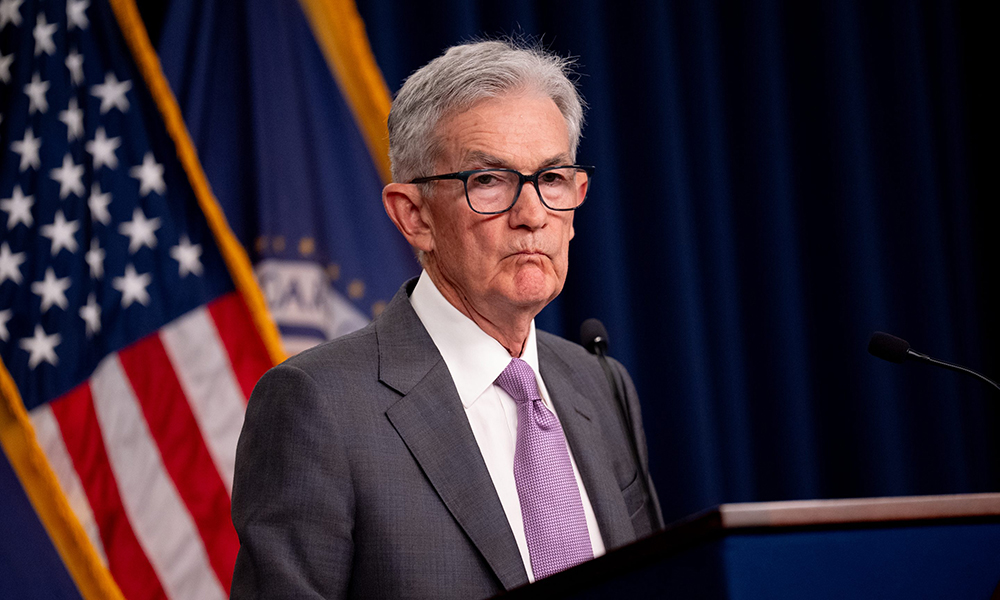
从纸面上看,美国经济似乎依旧强劲,但随着对“氛围衰退”的担忧成为主流,美国人却比以往更担心失业。
由Z世代经济学家和TikTok网红吉拉·斯坎伦创造的合成词“氛围衰退”,是指经济并未陷入衰退但公众的金融情绪却非常消极这种脱节的现象。随着股市与就业焦虑之间的分歧越来越大,这种现象似乎正在达到高潮。
纽约联邦储备银行(Federal Reserve Bank of New York)的劳动力市场预期调查显示,7月,平均预期失业概率提高到4.4%,这是自2014年以来的最高水平,远高于一年前的3.9%。
7月份找工作者的比例达到28.4%,同样是自2014年以来的最高水平,与一年前的19.4%相比有大幅提高。这份报告调查了全美1,000名具有代表性的受访者,报告强调了其他多个令人担忧的劳动力趋势,包括仍在为相同雇主工作的人数降至历史最低。
与此同时,在这份报告出炉的同时,周一美国股市总体连续八周上涨,而且7月份的零售销售创下一年多以来的最大涨幅。
劳动力市场疲软的信号,例如7月份不及预期的就业报告和失业率升高等,依旧让一些人产生了氛围衰退的担忧。先买后付公司Affirm在6月份的一项研究发现,大多数人相信美国经济陷入了衰退。与此同时,沃顿商学院(Wharton)教授杰瑞米·西格尔等著名经济学家认为,美国仍处在“金发姑娘经济”阶段,即增长强劲,且通胀速度减慢。经济学家们用“金发姑娘经济”形容经济状况,就像童话故事《金发姑娘与三只熊》(Goldilocks and the Three Bears)中所描述的那样“恰到好处”,既不过冷,也不过热。
市场参与者将密切关注美联储主席杰罗姆·鲍威尔本周五将在怀俄明州杰克逊霍尔发表的年度讲话,从中找到美联储即将降息的蛛丝马迹。
在为期三天的杰克逊霍尔会议之前,美联储高官就已经注意到疲软的就业数据,有多位高官称,美联储需要关注另外一项重要任务,最大程度增加就业。
芝加哥联储(Chicago Fed)主席奥斯坦·古尔斯比和旧金山联储(San Francisco Fed)主席玛丽·C·戴利表示,美联储一直在密切关注失业率,用于评估是否降息,以及进行多大幅度的降息。
上周,亚特兰大联储(Atlanta Fed)主席拉斐尔·波斯迪克对《金融时报》表示,他对美联储在9月份的下一次会议上降息持开放态度,而且美联储必须“格外警惕”。
他说道:“因为我们的政策无论效果好坏,时间上都存在滞后。我们无法承受拖延的后果。我们必须尽快行动。”(财富中文网)
译者:刘进龙
审校:汪皓
从纸面上看,美国经济似乎依旧强劲,但随着对“氛围衰退”的担忧成为主流,美国人却比以往更担心失业。
由Z世代经济学家和TikTok网红吉拉·斯坎伦创造的合成词“氛围衰退”,是指经济并未陷入衰退但公众的金融情绪却非常消极这种脱节的现象。随着股市与就业焦虑之间的分歧越来越大,这种现象似乎正在达到高潮。
纽约联邦储备银行(Federal Reserve Bank of New York)的劳动力市场预期调查显示,7月,平均预期失业概率提高到4.4%,这是自2014年以来的最高水平,远高于一年前的3.9%。
7月份找工作者的比例达到28.4%,同样是自2014年以来的最高水平,与一年前的19.4%相比有大幅提高。这份报告调查了全美1,000名具有代表性的受访者,报告强调了其他多个令人担忧的劳动力趋势,包括仍在为相同雇主工作的人数降至历史最低。
与此同时,在这份报告出炉的同时,周一美国股市总体连续八周上涨,而且7月份的零售销售创下一年多以来的最大涨幅。
劳动力市场疲软的信号,例如7月份不及预期的就业报告和失业率升高等,依旧让一些人产生了氛围衰退的担忧。先买后付公司Affirm在6月份的一项研究发现,大多数人相信美国经济陷入了衰退。与此同时,沃顿商学院(Wharton)教授杰瑞米·西格尔等著名经济学家认为,美国仍处在“金发姑娘经济”阶段,即增长强劲,且通胀速度减慢。经济学家们用“金发姑娘经济”形容经济状况,就像童话故事《金发姑娘与三只熊》(Goldilocks and the Three Bears)中所描述的那样“恰到好处”,既不过冷,也不过热。
市场参与者将密切关注美联储主席杰罗姆·鲍威尔本周五将在怀俄明州杰克逊霍尔发表的年度讲话,从中找到美联储即将降息的蛛丝马迹。
在为期三天的杰克逊霍尔会议之前,美联储高官就已经注意到疲软的就业数据,有多位高官称,美联储需要关注另外一项重要任务,最大程度增加就业。
芝加哥联储(Chicago Fed)主席奥斯坦·古尔斯比和旧金山联储(San Francisco Fed)主席玛丽·C·戴利表示,美联储一直在密切关注失业率,用于评估是否降息,以及进行多大幅度的降息。
上周,亚特兰大联储(Atlanta Fed)主席拉斐尔·波斯迪克对《金融时报》表示,他对美联储在9月份的下一次会议上降息持开放态度,而且美联储必须“格外警惕”。
他说道:“因为我们的政策无论效果好坏,时间上都存在滞后。我们无法承受拖延的后果。我们必须尽快行动。”(财富中文网)
译者:刘进龙
审校:汪皓
The economy may look strong on paper, but Americans are more worried than ever about losing their jobs as fears of a “vibecession” take hold.
The portmanteau “vibecession,” coined by Gen-Z economist and TikTok star Kyla Scanlon, refers to the disconnect that occurs when public financial sentiment is negative even though the economy isn’t in a recession. Given the growing chasm between the stock market and job anxiety, the phenomenon appears to be in full swing.
A labor-market expectations survey by the Federal Reserve Bank of New York showed that the average expected likelihood of being unemployed rose to 4.4% in July, the highest level since 2014 and up from 3.9% a year earlier.
The number of people seeking a job in July was also at its highest since 2014, at 28.4%—a marked increase over the 19.4% seeking jobs a year ago. The report, which surveyed 1,000 nationally representative respondents, also highlighted several other worrying labor trends including a record-low number of people still working for the same employer.
Meanwhile, the survey comes as the overall stock market recorded its eighth straight week of gains on Monday and retail sales in July recorded their biggest increase in over a year.
Still, signs of softening in the labor market, including a weaker-than-expected July jobs report and rising unemployment, have some worried about a vibecession. A June study by buy-now, pay-later company Affirm found that a majority of people believed that the U.S. was in a recession. Meanwhile top economists like Wharton professor Jeremy Siegel believe the U.S. is in a “Goldilocks economy” with strong growth and slowing inflation. Economists use the term to describe an economy that’s “just right,” or not too cold, and not too hot, as in the children’s story “Goldilocks and the Three Bears.”
Accordingly, market participants will have their eyes fixed on Fed Chairman Jerome Powell’s annual speech, on Friday in Jackson Hole, Wyo., for signs of an impending interest rate cut.
Top Federal Reserve leaders have taken notice of weakening labor numbers ahead of the three-day Jackson Hole meeting, and several have said the Fed needs to monitor its other mandate, striving for maximum employment.
Both Chicago Fed president Austan Goolsbee and San Francisco Fed president Mary C. Daly said the central bank was closely watching unemployment to gauge whether to cut rates and if so, by how much.
And last week, Atlanta Fed president Raphael Bostic told the Financial Times that he was open to the idea of the central bank cutting interest rates at its next meeting in September, and that the Fed has to be “extra vigilant.”
“Because our policies act with a lag in both directions, we can’t really afford to be late. We have to act as soon as possible,” he said.






